
ShipStation integration
What is ShipStation?
ShipStation is a web-based shipping software designed to help e-commerce businesses manage and automate order fulfillment. It provides tools for batch shipping, real-time tracking, and integrations with major carriers like FedEx, UPS, and USPS. With ShipStation, businesses can streamline their shipping process, reduce manual work, and improve overall efficiency.
How to use Parabola's ShipStation integration
Parabola's ShipStation integration allows businesses to automate shipping workflows and optimize order management.
- Import and process ShipStation order and tracking data automatically
- Update shipping statuses and generate reports without manual input
- Sync ShipStation data with other business tools for better logistics management
Learn more about Parabola’s ShipStation integration below.
Pull from ShipStation
The Pull from ShipStation step allows you to pull in orders, shipments, and fulfillments from your ShipsStation account.
Connect your ShipStation account
After clicking Authorize, you'll need to get your API Key and Secret and add them, which will enable this flow to pull from your ShipStation account. You can find your API Key and Secret here: https://ship11.shipstation.com/settings/api.
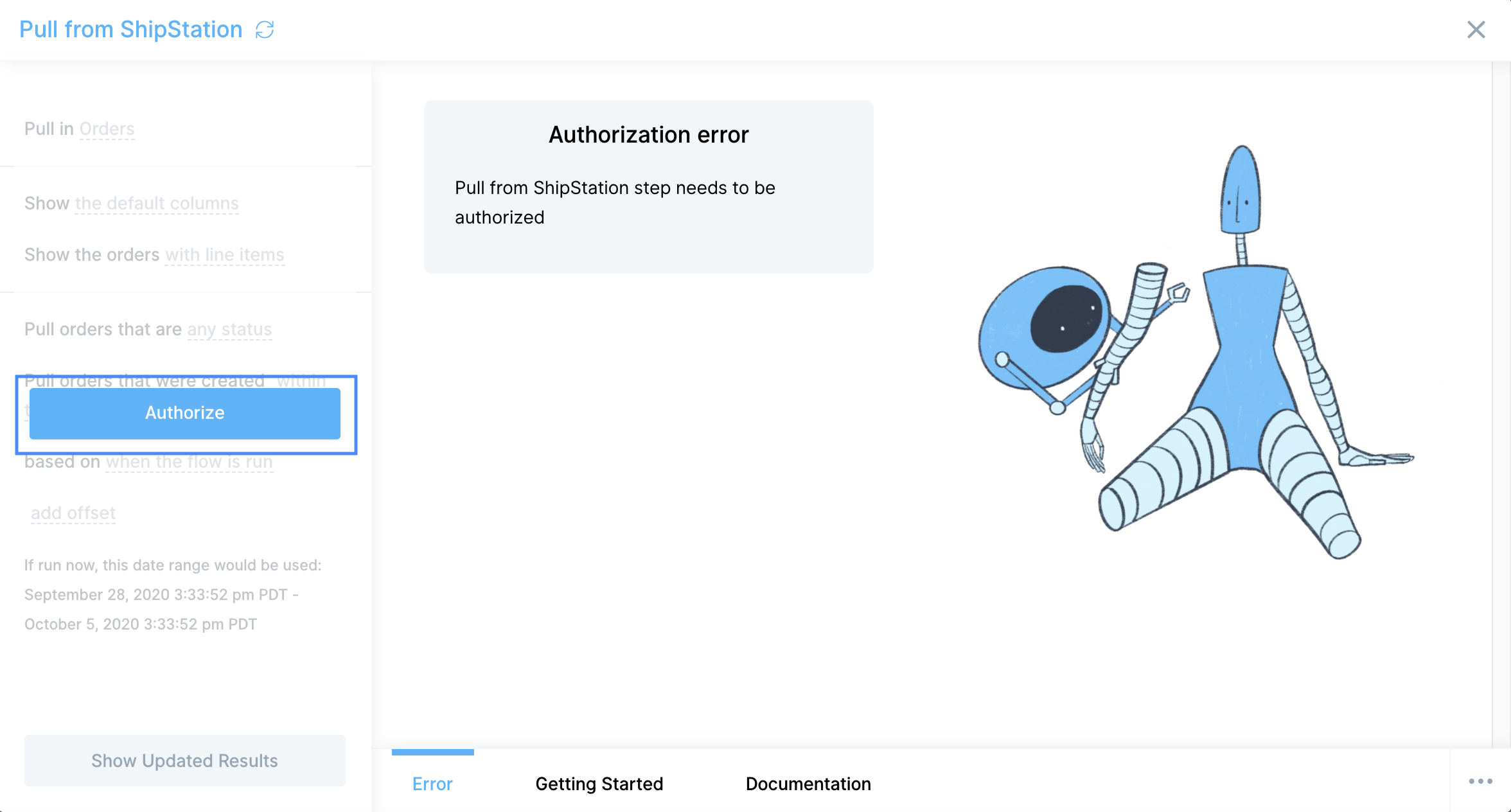
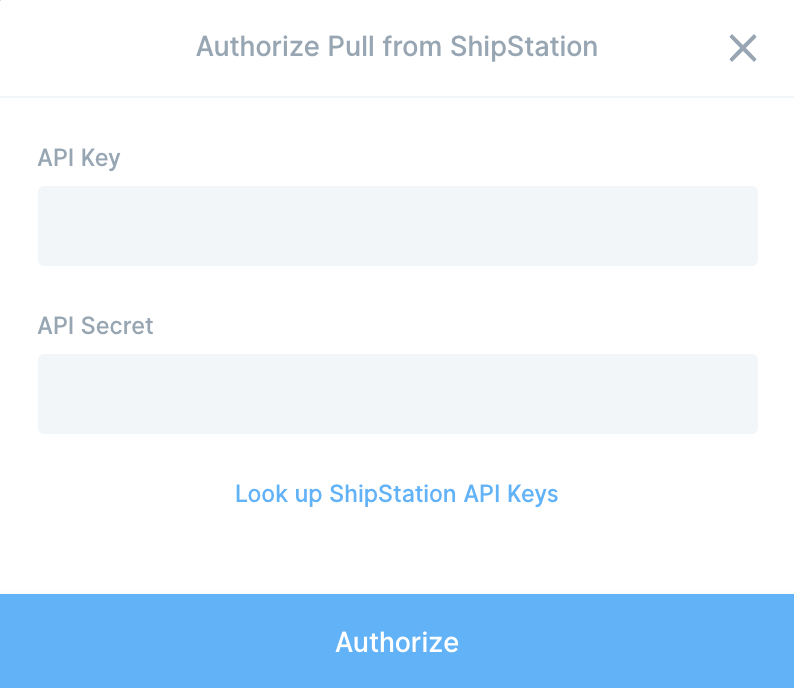
Default settings
By default, thstep will pull in Orders that were created within the last week. The orders pull defaults to also pulling in the line items for each order. This means that each row represents an item in an order. You can also pull in Shipments and Fulfillments.
Across Orders, Shipments, and Fulfillments, you can modify the time frame, default or all columns, and you can filter based on things like status and carrier.
Custom settings
Orders
When pulling in shipments, you can select to pull in the default column set or all columns. By default, the Orders pull includes line items. You can change this by updating the settings to show orders without line items
Orders can be filtered in this step to only include those with order status (i.e. Awaiting Shipment).
Orders can also be filtered down by the date they were created.
Shipments
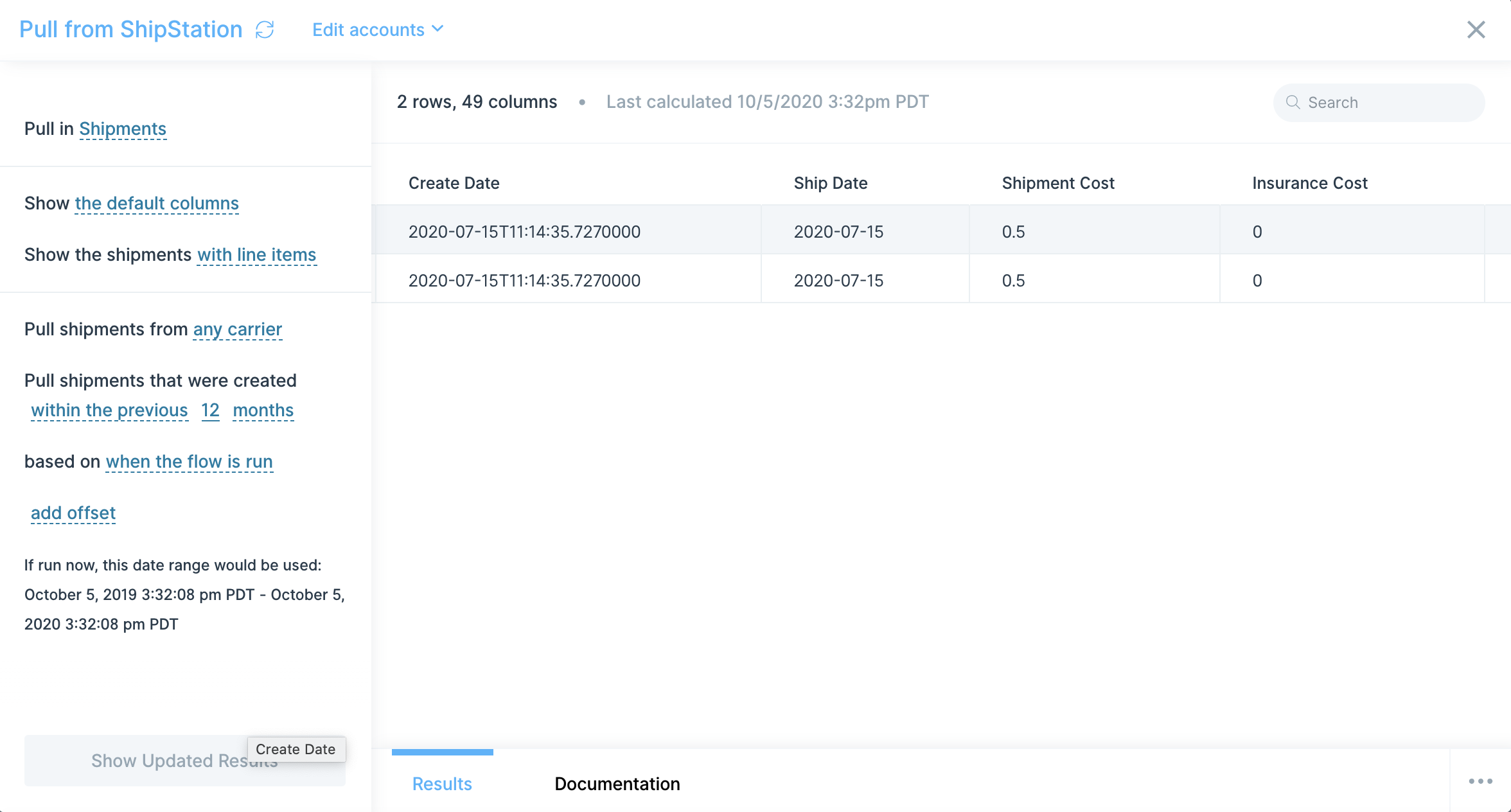
When pulling in shipments, you can select to pull in the default column set or all columns. By default, the Shipments pull includes line items. You can change this by updating the settings to show shipments without line items. Shipments can be filtered in this step to only include those sent via a certain carrier (i.e. UPS). Shipments can also be filtered down by the date they were created.
Fulfillments
When pulling in fulfillments, you can select to pull in the default column set or all columns. Fulfillments can also be filtered down by the date they were created.
Helpful tips
- This step is available starting at our Plus plan.
Pull carrier rates from ShipStation
The ShipStation API is used for managing and automating shipping tasks, integrating with e-commerce platforms, and streamlining order fulfillment and shipment processes.
ShipStation is a beta integration which requires a slightly more involved setup process than our native integrations. Following the guidance in this document should help even those without technical experience pull data from ShipStation. If you run into any questions, shoot our team an email at support@parabola.io.
Use Cases
🤝 ShipStation | Integration configuration
📖 ShipStation API reference docs:
https://www.shipstation.com/docs/api/
🔐 ShipStation Authentication docs:
https://www.shipstation.com/docs/api/requirements/#authentication
Instructions
1. Navigate to your ShipStation settings in your account.
2. In the API Keys section, create or regenerate your API Key and API Secret.
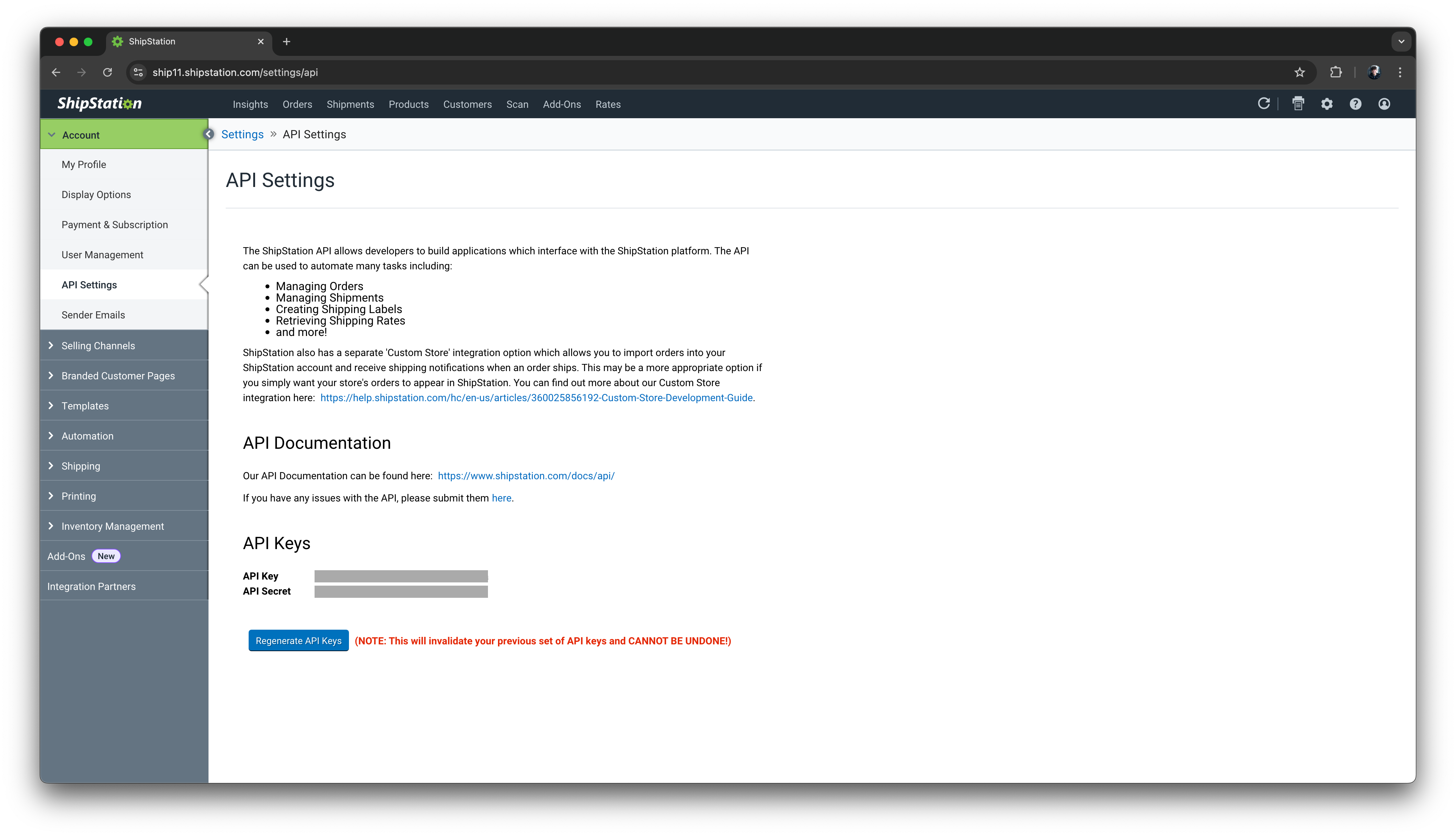
3. Save your credentials before connecting to Parabola.
🔐 Parabola | Authentication
1. Add a Pull carrier rates from ShipStation step template to your canvas.
2. Click into the Pull from API: Carriers step to configure your authentication.
3. Under the Authentication Type, select None.
4. Click into the Request Settings to configure your request using the format below:
Request Headers
💡 Tip: You can configure an Authorization Header Value using a base-64 encoder. Encode your Client ID and Client Secret separated by a colon: Client ID:Client Secret.
In Parabola, use the Header Value field to type Basic , followed by a space, and paste in your encoded credentials: Basic {encoded credentials here}.
5. Click into the Enrich with API: ShipStation Rates step and apply the same authentication settings used in steps 1-4.
Example Screenshot

⚠️ Note: In this example, the API Key isapi_key. The API Secret isapi_secret.
Base-64 encoding the API Key and API Secret, separated by a colon, generates the following string:YXBpX2tleTphcGlfc2VjcmV0
🌐 ShipStation | Sample API Requests
Calculate shipping rates by ShipStation carriers
Get started with this template.
Load sample orders
1. Add a Use Sample data step to your canvas. You also can import a dataset with tracking numbers into your Flow (Pull from Excel File, Pull from Google Drive, Pull from API, etc.)
2. Select the Ecommerce: Orders dataset and click Refresh Data.
💡 Tip: Connect the sample data to a Limit rows step to get rates for 1 sample order.
3. Use an Add text columns step to generate a new column Merge.
- Set the column value to
1.
List all Shipstation carriers
4. Add a Pull from API step beneath the Use sample data step.
5. Click into the step. Under Authentication Type, select None.
6. Click into the Request Settings and configure a request to list all carriers in your ShipStation account:
API Endpoint URL
Request Headers
7. Click Refresh data to display the results.
8. Select orders as a Nested Key.
9. Click Refresh data once more to expand the order data into a table.
Example Screenshot
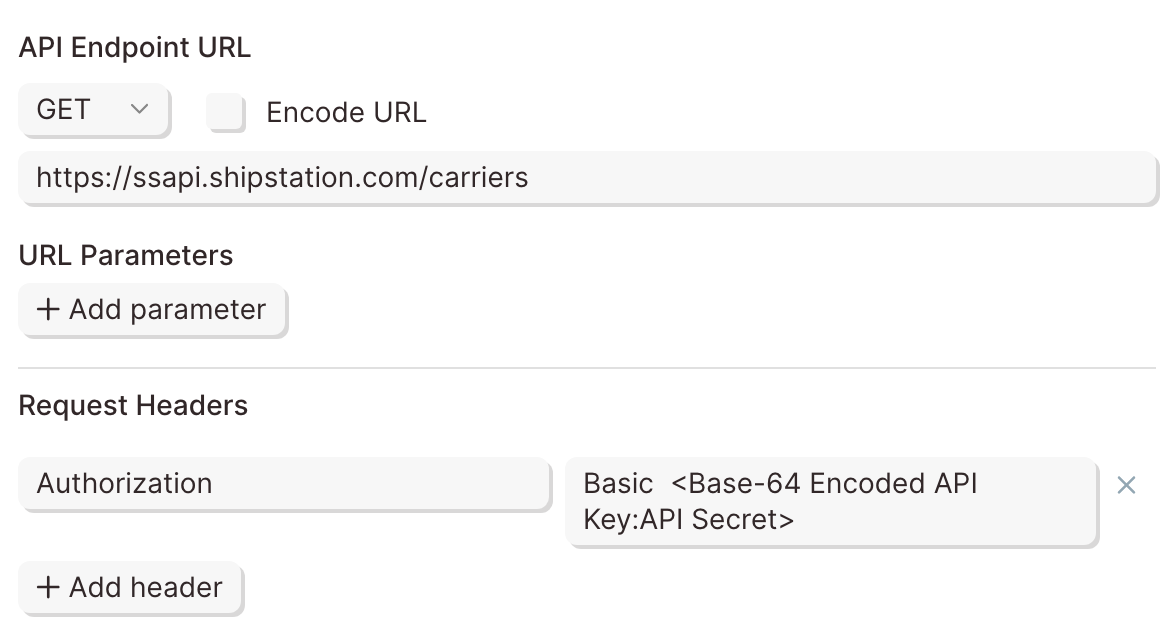
10. Connect this step to Edit columns step.
11. In the Edit columns step, keep the name and code columns.
12. Use an Add text columns step to generate a new column Merge.
- Set the column value to
1.
Map ShipStation carriers to sample orders
13. Use a Combine tables step and connect these steps:
- Input 1: Add text column (Load sample data)
- Input 2: Add text column (Import ShipStation carriers)
14. Click into the step to configure the settings.
- Keep all rows from Add text column (Load sample data)
- Keep only matching rows from Add text column (Import ShipStation carriers)
- Where the
Mergecolumn matches.
Merge product weight and dimensions
15. Copy and paste the Products - Weight and dimensions.csv file snippet into your flow: parabola:cb:86331de2-e00b-4634-b629-d37098bbbdfe
16. Use another Combine tables step and connect these steps:
- Input 1: Combine tables
- Input 2: Pull from CSV file
17. Click into the step to configure the settings.
- Input 1: Combine tables
- Input 2: Pull from CSV file
- Where the
Product TitleandProductcolumns match
Get carrier shipping rates for sample orders
18. Connect the dataset to an Enrich with API step.
19. Click into the step. Under Authentication Type, select None.
30. Click into the Request Settings to configure a request to get shipping rates for the specified shipping details:
API Endpoint URL
Request Body
Request Headers
Example Screenshots
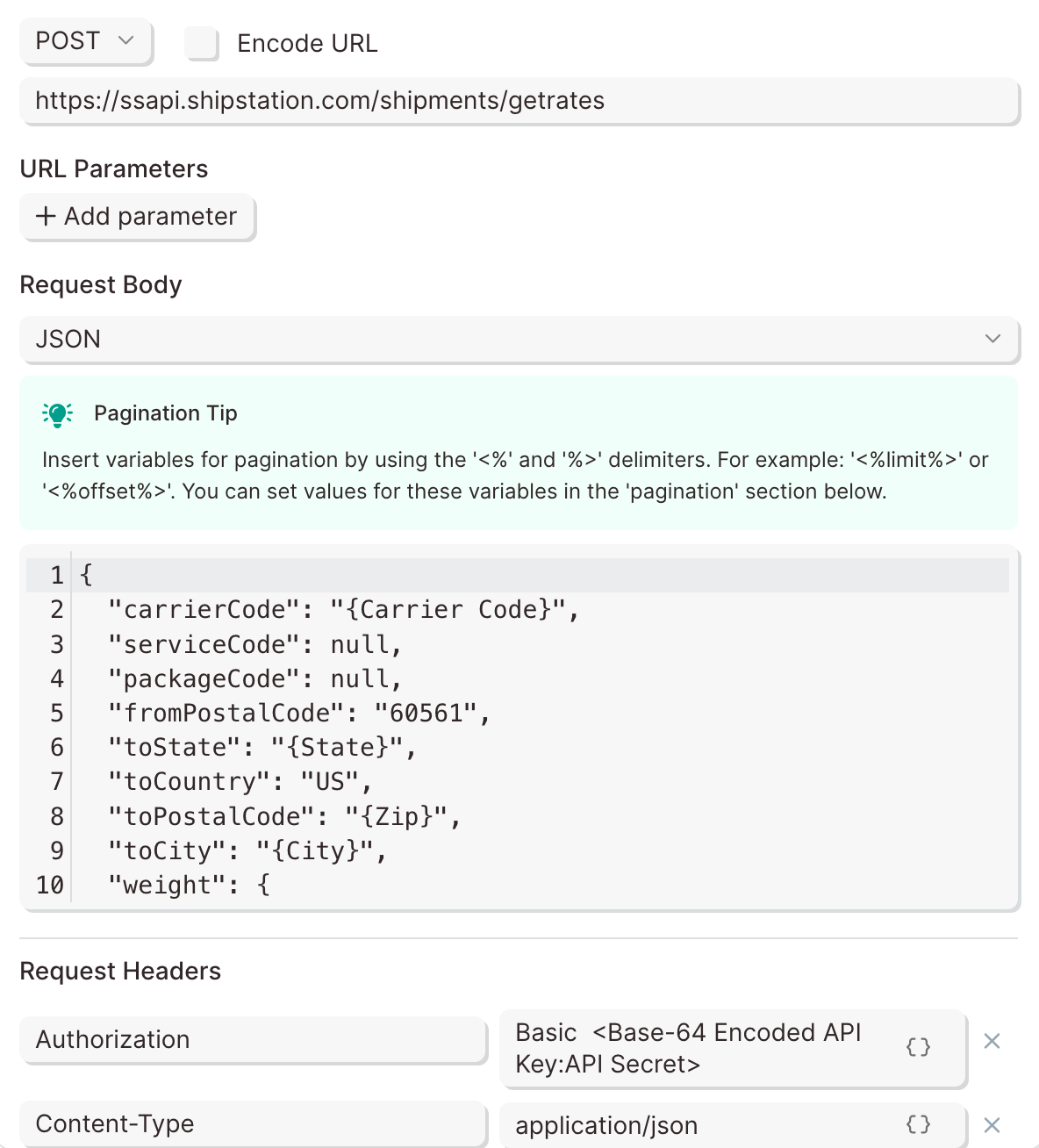
Template Screenshot

📣 Callouts
Note: The weight of the order must be provided in the API request. The dimensions are optional. Consider using an Add math column and Sum by group steps to calculate weight and dimension values by order and quantity.